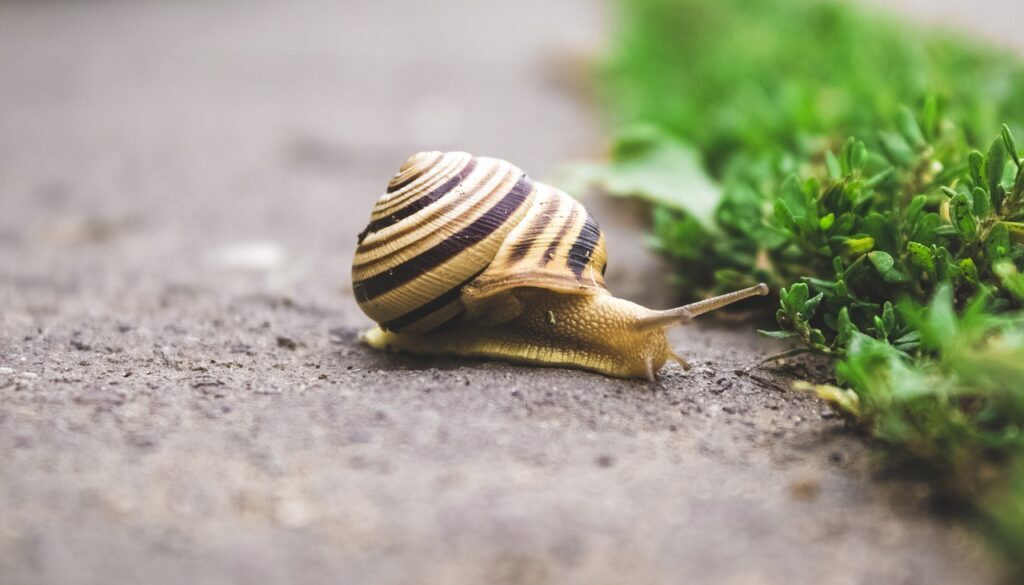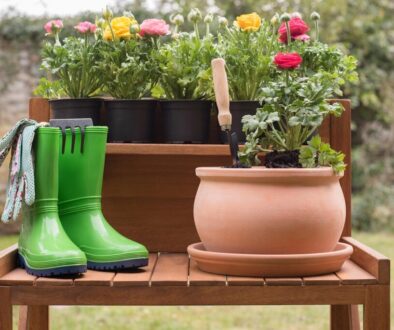How to Keep Slugs and Snails from Eating Your Plants: A Gardener’s Guide to a Slug-Free Paradise
If you’ve ever woken up to find your precious plants looking like they’ve been through a miniature salad bar, you’re not alone. Slugs and snails are the ultimate uninvited guests in your garden, munching on your hard work like it’s an all-you-can-eat buffet. But don’t worry—keeping these slimy intruders at bay doesn’t have to be a battle of wits. With a few clever strategies, you can protect your plants and enjoy a thriving garden. Let’s dive into some tried-and-true methods to keep slugs and snails from turning your green oasis into their personal dining spot.
1. Create a Barrier They Can’t Cross (Or Won’t Want To)
One of the simplest ways to protect your plants is by creating physical barriers that slugs and snails can’t or won’t cross. These slimy critters are surprisingly picky about what they’ll crawl over, so use that to your advantage. For example, sprinkle crushed eggshells, diatomaceous earth, or coarse sand around the base of your plants. These materials are sharp and uncomfortable for their soft bodies, making them think twice before advancing.
You can also try copper tape or wire around planters or garden beds. When slugs and snails come into contact with copper, it gives them a tiny electric shock—nothing harmful, but enough to send them slithering in the opposite direction. It’s like installing a mini electric fence for your plants! Just make sure the barrier is wide enough (at least 2 inches) and free of gaps, or they’ll find a way around it.
2. Invite Natural Predators to the Party
Why do all the work yourself when nature can lend a helping hand? Slugs and snails have plenty of natural enemies, and inviting these predators into your garden can help keep the population in check. Birds, frogs, toads, and even some beetles love to snack on slugs and snails. To attract birds, set up a bird feeder or birdbath nearby. For frogs and toads, create a small pond or damp, shady area where they can hang out.
If you’re feeling particularly adventurous, consider introducing nematodes—tiny, worm-like organisms that are harmless to plants but deadly to slugs. You can buy nematodes online or at garden centers, and they’re easy to apply by mixing them with water and spraying them on your soil. It’s like hiring a microscopic security team for your garden!
3. Trap Them (The Nice Way or the Not-So-Nice Way)
Sometimes, the best way to deal with slugs and snails is to trap them. There are two main approaches: the humane way and the not-so-humane way. For a kinder option, try setting up beer traps. Slugs and snails are attracted to the yeast in beer, so bury a shallow container (like a yogurt cup) in the soil and fill it with beer. They’ll crawl in for a drink and won’t be able to crawl out. Just remember to empty the trap regularly and refill it with fresh beer.
If you’re okay with a more direct approach, you can use commercial slug pellets. However, be cautious with these, as they can harm other wildlife and pets. Look for pet-safe, iron phosphate-based pellets, which are less toxic to the environment. Scatter them sparingly around your plants, and they’ll do the rest of the work.
4. Choose Plants They Don’t Like
Did you know that slugs and snails have picky palates? While they’ll happily devour tender greens like lettuce and hostas, they tend to avoid plants with strong scents, fuzzy leaves, or tough textures. By strategically choosing plants they dislike, you can reduce the chances of an infestation. Some great options include lavender, rosemary, sage, and ferns. These plants not only add beauty to your garden but also act as natural repellents.
If you’re growing vegetables, consider planting slug-resistant varieties like kale, Swiss chard, or garlic. You can also interplant these with more vulnerable plants to create a protective barrier. It’s like building a fortress around your garden, but with plants!
5. Keep Your Garden Clean and Tidy
Slugs and snails love hiding in dark, damp places during the day and coming out to feast at night. By keeping your garden clean and tidy, you can eliminate their favorite hiding spots. Regularly remove fallen leaves, weeds, and debris where they might take shelter. If you use pots or garden tools, store them off the ground to avoid creating cozy hideouts.
Another tip is to water your plants in the morning rather than the evening. This gives the soil time to dry out during the day, making it less appealing to moisture-loving slugs and snails. A dry garden is a less inviting garden for these slimy pests.
6. Go Hands-On (If You’re Brave Enough)
If you’re not squeamish, you can take a more hands-on approach to slug and snail control. Head out to your garden at night with a flashlight and a pair of gloves, and manually pick them off your plants. It’s not the most glamorous job, but it’s effective. Once you’ve collected them, you can relocate them far away from your garden or dispose of them humanely.
For an extra layer of protection, consider creating a “slug zone” in a corner of your yard. Place a few sacrificial plants there to attract slugs and snails away from your main garden. It’s like setting up a decoy to keep the rest of your plants safe.
7. Experiment with Homemade Remedies
If you love a good DIY project, there are plenty of homemade remedies to try. One popular option is a spray made from garlic or chili peppers. Simply blend a few cloves of garlic or a handful of chili peppers with water, strain the mixture, and spray it on your plants. The strong smell and taste will deter slugs and snails without harming your plants.
Another trick is to use coffee grounds. Slugs and snails dislike the caffeine in coffee, so sprinkling used grounds around your plants can act as a natural repellent. Plus, it’s a great way to recycle your coffee waste!
8. Stay Consistent and Patient
Finally, remember that keeping slugs and snails at bay is an ongoing process. These persistent pests are experts at finding new ways to sneak into your garden, so consistency is key. Rotate between different methods to keep them guessing, and don’t get discouraged if you don’t see immediate results. Over time, your efforts will pay off, and you’ll be able to enjoy a beautiful, slug-free garden.
By combining these strategies, you can create a garden that’s both beautiful and resilient. Whether you’re building barriers, inviting predators, or experimenting with DIY remedies, there’s a solution that’s perfect for your garden. So roll up your sleeves, grab your gardening gloves, and get ready to show those slugs and snails who’s boss! Your plants will thank you.
Happy Gardening!




